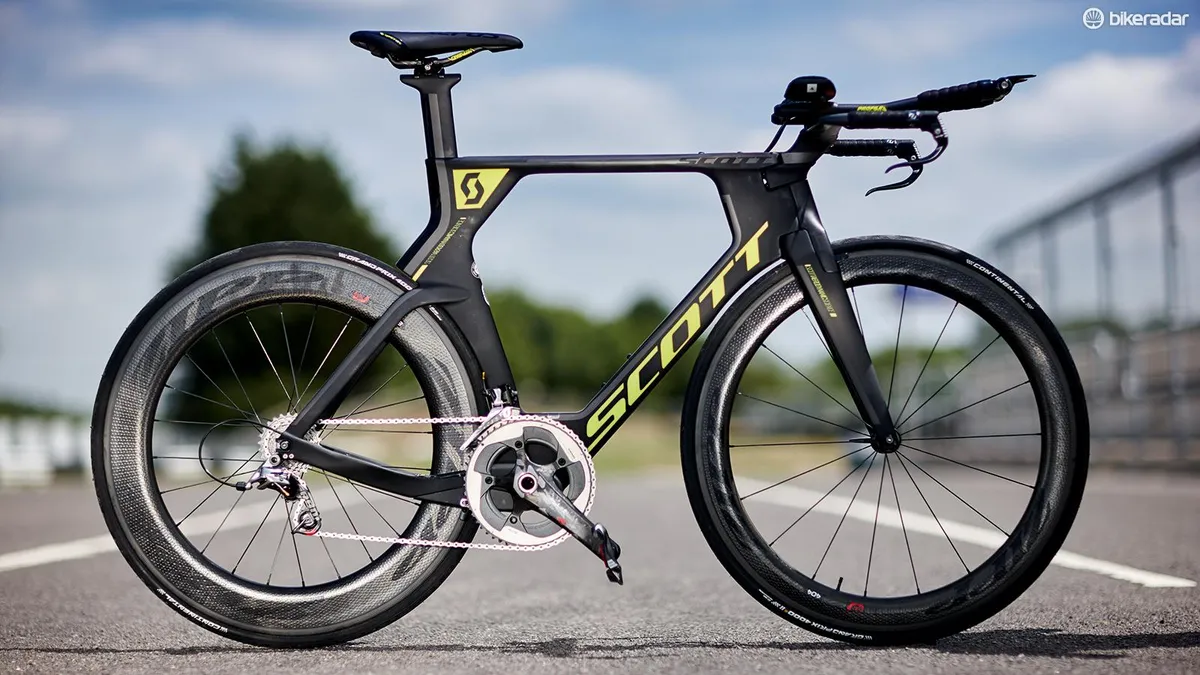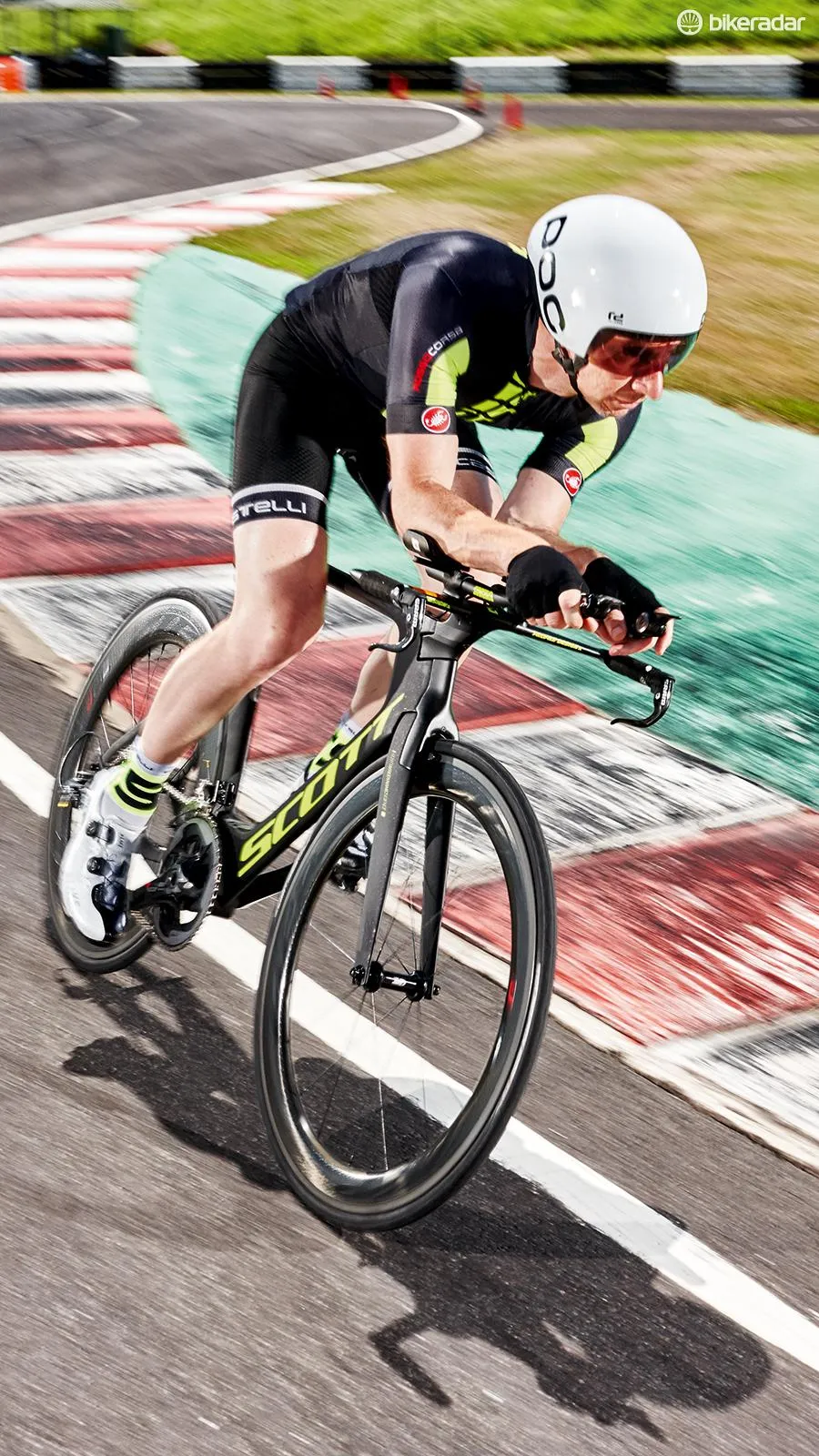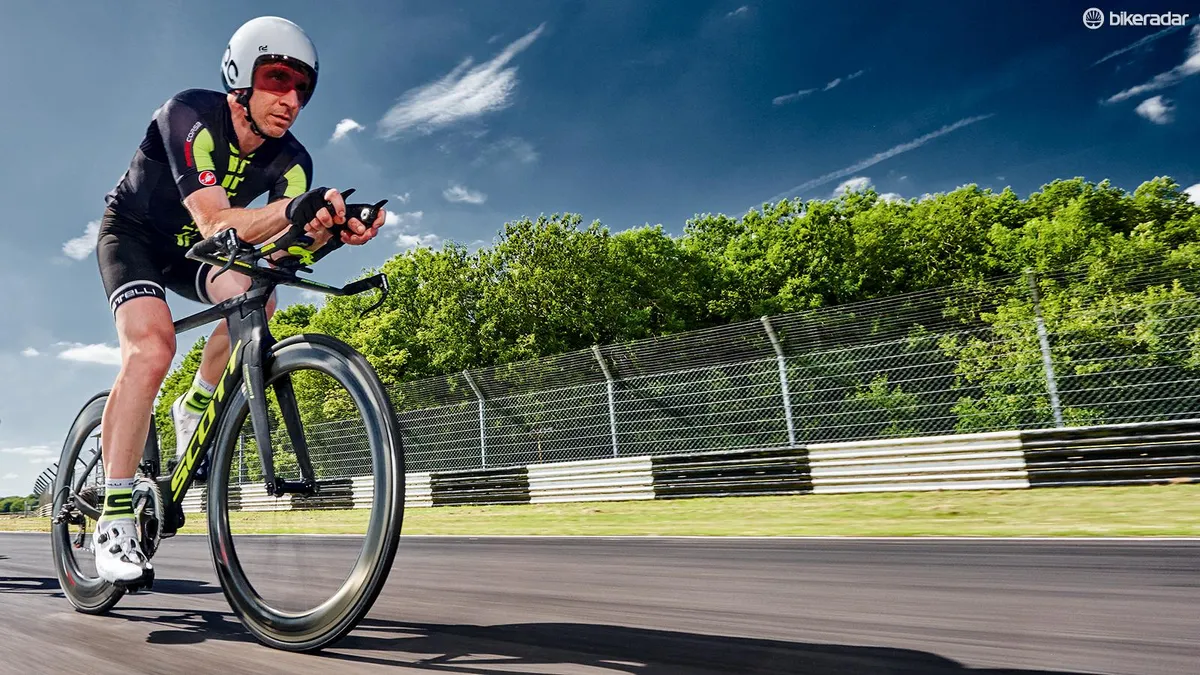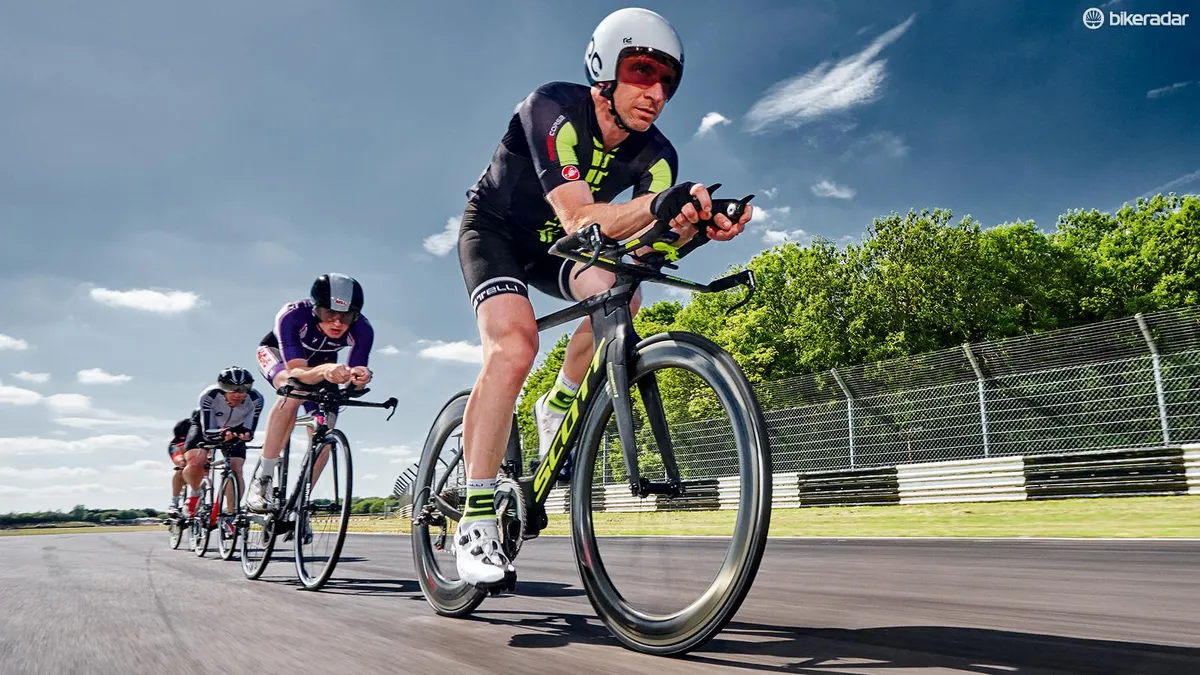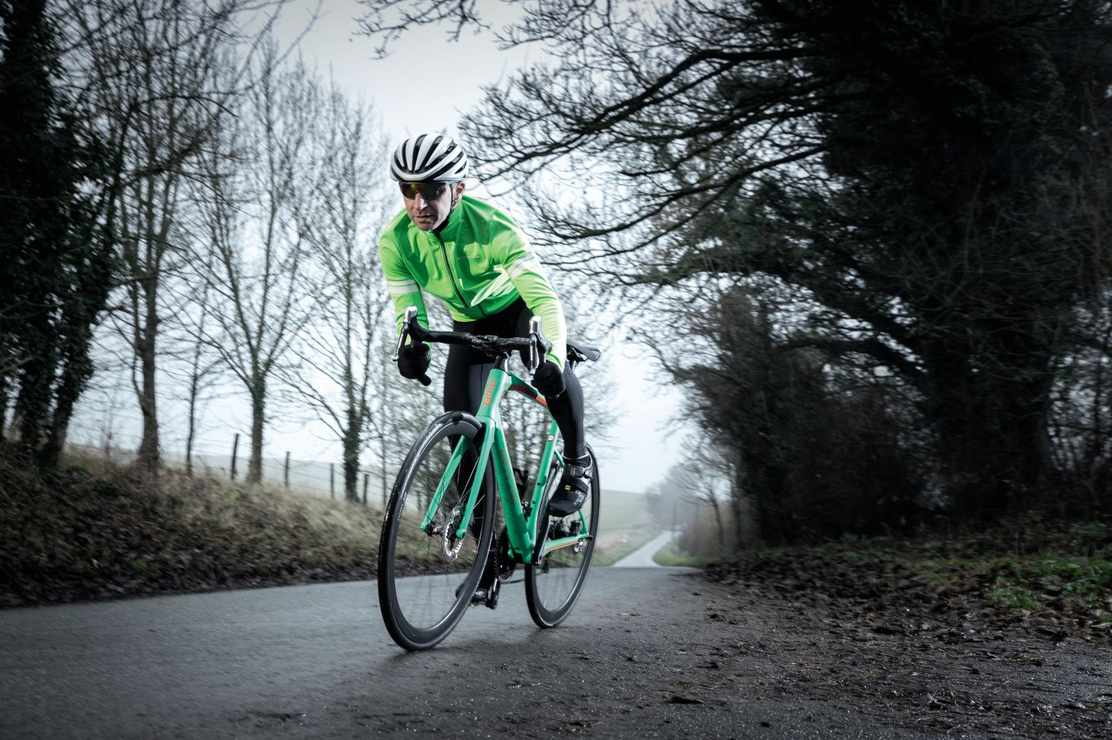The first impression, when you hop aboard Scott’s Plasma 5 TT bike, is of a seemingly tipped forward feel when gripping the base bar’s horizontal extensions.
- Highs: Jaw-dropping looks, cutting edge integrated design, raw speed
- Lows: Mechanical shifting saves weight, but is less convenient than electronic
- Buy if: You have the physical ability to match the Plasma’s enormous speed potential
The Plasma-specific Profile bar’s wing shape continues through the stubby stem clamp though, and can’t be adjusted for angle, sitting perfectly level, and does need a little getting used to. It’s easily solid enough to resist starting efforts, or when climbing or sprinting out of a corner, and the alloy extensions are super tough too.
Related: The best 2016 TT and triathlon bikes at Eurobike
A SRAM Red drivetrain – a mechanical choice among mostly Di2-equipped competition – make this bike something of a distinctive beast. Without the ability to shift from the brake levers, gear changes are controlled solely from SRAM’s R2C (Return to Centre) bar end levers, although these have an advantage over other linear shifters by working sequentially.

Acceleration is brutally rapid
Each lever can be clicked to shift in the appropriate direction, and instantly returns to the straight ahead position, making it easier to use every time, but also not interfering with airflow. With both brake cables routed completely internally, only the gear cables are visible, each making a short hop to their frame entry point behind the stem.
The SRAM Powerdome cassette makes a unique sound when changing gears, like an oversized watch mechanism, and is equally precise. Add the sound of Zipp’s 808 rear and 404 front Firecrest carbon clincher wheels, and the Plasma has fantastically fast aural quality, with a deep hollow swoosh whenever the rims leave the vertical plane.
Related: Zipp’s Firecrest gets better - and much cheaper
Acceleration is as urgent as is realistically possible from a time trial machine, and with the low overall mass, wheel stiffness and efficiency, the Plasma maximises your carefully honed wattage. Spending the time refining your position really pays off when settling in to an aero tuck, and the Plasma is hugely adjustable.
The supplied stem swoops upwards in one piece, but it is possible to fit one that flows forwards in line with the top tube for a pro-low position. Otherwise, just go for a smaller frame size, as the Plasma’s high stance can be deceiving if judged solely by frame size.
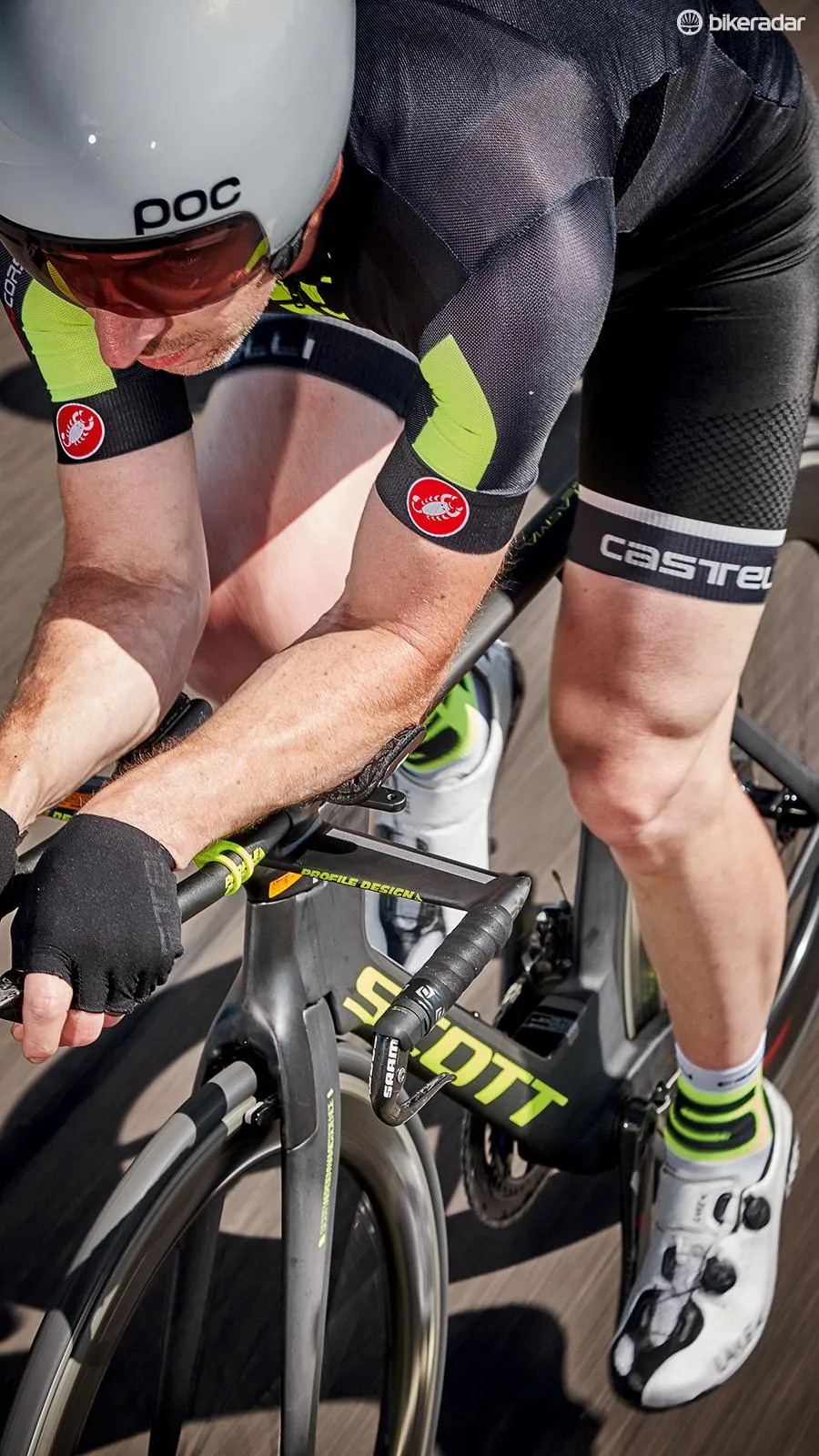
The aero Profile bar takes a bit of getting used to
The bulbous bottom bracket shell sits beneath a massively boxy transition between the down tube and seat tube, with the unique chainstays twisting their way rearwards and encapsulating the completely hidden rear brake. The front brake lives in a recess in the fork crown, with an airflow-smoothing cover completing the aero lines from fork legs to stem.
The fork’s turning radius is less than the integrated competition, and the level of Kamm-tail shaping and drag-saving fairings is far superior too. The end result is a bike that’s incredibly solid and stable, and really chuckable, feeling as capable in the corners as most road mounts, the only limiting factors being your handhold, position on board and adaptation to the bike.
To get the most out of yourself against the clock, you want a bike that is there for you when you reach the outer reaches of your ability, and when the red mist descends and it all gets a little dizzying and breathless, you'll be hard pressed to find a better bike for the task than the Plasma 5.
